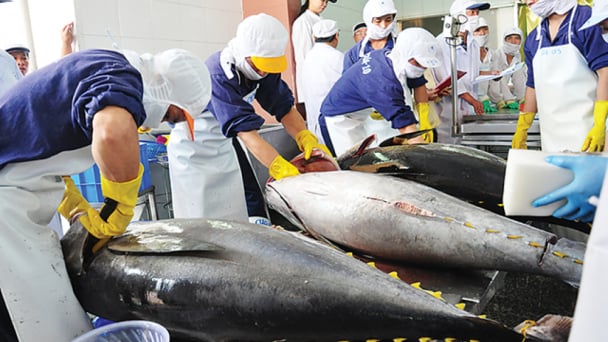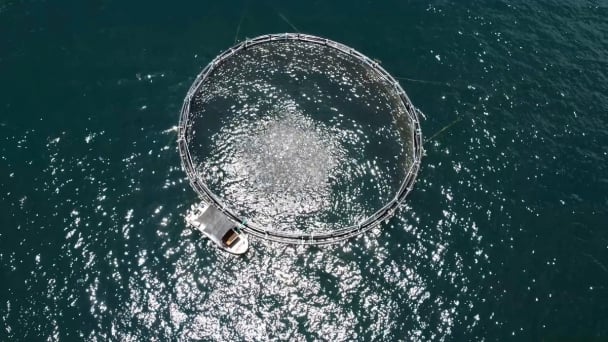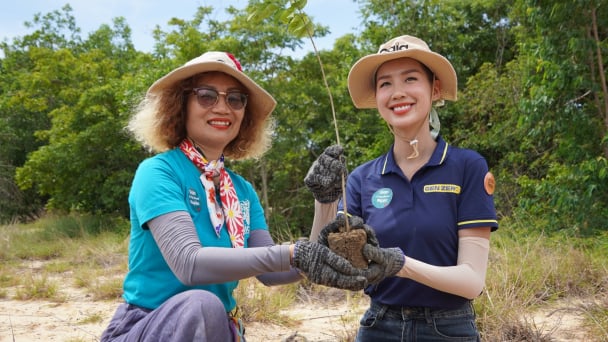September 5, 2025 | 06:18 GMT +7
September 5, 2025 | 06:18 GMT +7
Hotline: 0913.378.918
September 5, 2025 | 06:18 GMT +7
Hotline: 0913.378.918

A close-up look at peafowls in Bau island (An Lao, Hai Phong). Photo: Duong Dinh Tuong.
“If anyone wants to know how beautiful the peafowl dance is, go to Bau Island Ecological Tourism Area (Bau Island Farm) of Bui Minh Hoa”. Bau Island Ecological Tourism Area is 76 ha wide and is located in My Duc commune (An Lao, Hai Phong).
When Hoa was making a tourism farm, many school students came to enrich their experience, so he wanted to turn this land into a miniature reserve. Apart from keeping the environment very well to attract storks, he also wanted to raise many other animals.
Nearly 10 years ago, Hoa bought 16 Indian peafowl pairs and developed the herd from that point. Sometimes it reached more than 200 peafowls, big and small. Not only students but also adults are very fond of seeing peafowl dance when coming to Bau Island Farm, especially in the outdoor conditions. The peafowls become an unforgettable highlight in the eyes of those who visit this ecotourism area.
Unlike chickens, peafowls are very difficult to train. At first, the peafowls only wander around, not remembering the meal time. When the evening comes and they are back to the barn, they just go to sleep wherever they see fit. Hoa thus has to bind their wings and only release the peacock and keep the peahen in the barn so that when the peahen calls, the peacock will know that he has to return.
"After a while, the peafowls get used to cars and people traveling by, they can find insects to eat and dance very naturally. The farm has now been licensed to breed peafowls. Before transporting the peachick, you must go through the ranger to ask for origin confirmation,” said Hoa.
According to Nguyen Thi Phuong Tiep, the caretaker of the peafowl flock on the island farm, the peafowls eat two meals a day. The feed regularly consists of industrial bran, sometimes she feeds them paddy and rice. In their diet, vegetables are indispensable.
“During the molting period, we need to mix tonics like C or B1 into their feed to increase resistance. Since this is a tourism farm, many people come to visit, so the disease prevention for the peafowl flock is very important, and the base of disease prevention is to increase resistance,” said Tiep.

It is imperative to arrange bamboo roosts in the barn so that the peafowls can perch. Photo: Duong Dinh Tuong.
“The peafowl barn is designed with 1/3 the roof and 2/3 outdoor playground so the flock can sunbathe and sand bathe. Hoa surrounds the cage with B40 mesh but refuses to use nylon mesh or thin steel mesh because the peafowls are prone to peck the fence, which potentially leads to bowel perforation or impacted crop. In winter, you have to cover the whole barn to keep peafowls warm, and in summer you let the barn open again, the inside must have a place for them to sleep, keeping the long tail feather while staying away from the humid barn floor. It is a solid setup to lower the risk of disease,” said Hoa.
The peacock is selected from those with a balanced body, beautiful feather colors, and a weight of around 4 kg. Each peacock is usually paired with 2 - 3 peahens, the fewer peahens are in a flock, the higher the rate of fertility. Bau Island Farm is built for conservation and tourism purposes, so it does not inject the vaccine. Other farms raise peafowl to sell seeds so farmers can use chicken vaccines for injection.
The peafowls are originally wild birds so they have good resistance but can still get diseases due to weather, environment, feed, and drinking water. Farmers should often observe their behavior and condition to detect abnormal signs early.
The object of raising peafowls is mainly people with economic conditions, raised for the purpose of having decorative pets, agricultural tourism or breed selling. If the household has never had experience in raising peafowls, it is advisable to choose a sturdy breed, from 6 months to 1 year old. When farmers have accumulated enough experience, they can raise peachicks from 1 month of age to minimize costs and quickly expand the flock.

Peafowls at Bau Island Farm, An Lao district (Hai Phong), performing a natural dance. Photo: Duong Dinh Tuong.
In the reproductive stage, in addition to industrial bran, farmers should pay attention to feeding peafowls rice, corn and vegetables. The diet and ratio should be adjusted in each season to help the peafowls gain feathers with vibrant colors, slim bodies without too much fat, better conditions for the gastrointestinal tract, and higher resistance to avoid disease.
Translated by Samuel Pham

(VAN) Planting area codes have become a ‘passport’ enabling Tuyen Quang’s agricultural products to cross borders and conquer demanding markets worldwide.
/2025/09/04/0437-2-145633_799.jpg)
(VAN) Deputy Minister Phung Duc Tien has directed drastic measures to address institutional, planning, and market bottlenecks in order to meet growth targets for the remaining four months of the year.

(VAN) An estimated USD 200 million worth of seafood from 12 fisheries that fail to meet U.S. Marine Mammal Protection Act (MMPA) is at risk of being banned from import into the U.S.

(VAN) The Governments agreed to further promote Vietnam-Cuba cooperation, linking it with production self-reliance and food security.

(VAN) In sub-Saharan Africa, approximately three out of four working women (76 percent) are employed in agrifood systems, and women make up 49 percent of the agrifood systems workforce.

(VAN) Mariculture is an inevitable trend, ensuring livelihoods today while preserving resources and the environment for future generations, enabling Vietnam’s seafood industry to grow steadily and reach further.

(VAN) Young people are advocating for a sustainable lifestyle, promoting carbon neutrality and climate protection, and emphasizing the critical role of forests in the context of climate change through their reforestation initiatives.